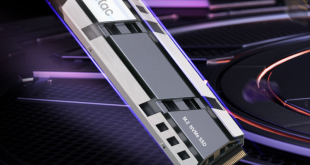The main browser window gives an overview of the three primary options. ‘Admin', ‘Web Disk', and ‘Photo Server'.
The main interface panel may not be quite as attractively designed as the Synology DiskManager implementation, but it is intuitive enough to navigate.
The Storage panel highlights the four hard drives we have installed. As mentioned earlier, we had a drive failure on the 3rd disk position. Thankfully the N4200ECO has a hot swappable feature, so we didn't need to reboot or power down.
RAID setup is straightforward, toggle the drives you have installed and then the options will open up underneath. Again, while this looks simple enough, many people might miss the ‘description' text underneath the ‘disks list'. With four drives installed, the N4200ECO support JBOD, Raid 0, Raid 1, Raid 5, Raid 6 and Raid 10. This is a fantastic level of support which will cater to a wide audience.
The system defaulted to 5% removed from the Raid 1 configuration.
The N4200ECO took around 4 hours to set up our Raid 1 configuration. When compared to Synology that really is painfully slow.
The system panel gives a basic overview of the processor activity although when compared against competing solution from QNAP or Synology it is sadly lacking.
Above is a complete overview of all the main panels on the left of the interface. Overall it is easy enough to use, although we found it quite sluggish and making a change on some panels could take 3-5 seconds.
 KitGuru KitGuru.net – Tech News | Hardware News | Hardware Reviews | IOS | Mobile | Gaming | Graphics Cards
KitGuru KitGuru.net – Tech News | Hardware News | Hardware Reviews | IOS | Mobile | Gaming | Graphics Cards






















Nice looking nice system. im in the market for one and a four bay unit seems the best value for money. this looks fast and I like the front panels. still swaying towards the synology 211 though.
Jeffrey thats a 2 bay nas? you got the models mixed up?
Never understand why companies don’t spend a little more time and money on the software and user guide. I remember the first time I saw a Synology product and was blown away because the software made sense. Thecus has been around a long time, they should make better interfaces. Also, faster reformatting.